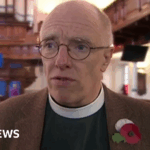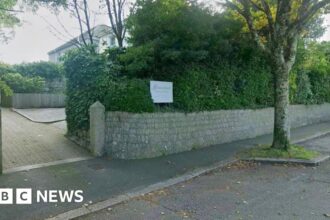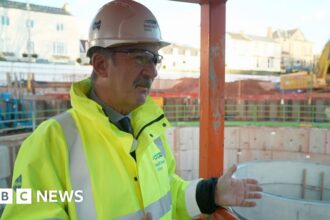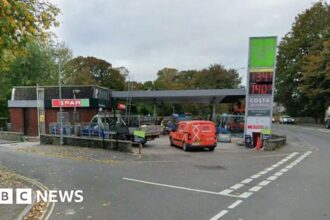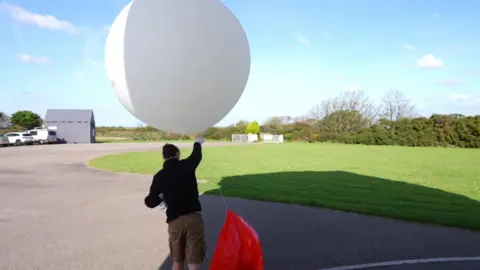 Tomasz Maciulewicz/BBC
Tomasz Maciulewicz/BBCThe Met Office has launched radiation sensors strapped to a weather balloon to go more than 100,000ft (30,480m) above its site in Cornwall to improve forecasts.
The monitor launched at Camborne is one of two sent up above the UK – with another going from Lerwick in Shetland.
The readings will help weather experts understand radiation levels through the atmosphere and how they differ from ground level to high in the atmosphere.
The monitors were developed by the University of Surrey Space Centre and were released on Friday, capturing live observations of radiation levels.
The Met Office said the readings will be compared with those gathered by ground-based monitoring equipment which was installed earlier this year at Camborne.
Met Office senior space weather manager Krista Hammond said: “Space weather monitoring is in its infancy compared to meteorology, so this project will provide a huge leap forward in terms of our understanding of how space weather events impact radiation levels through the Earth’s atmosphere.”
She said the information is important for industries which can be influenced by space weather, including aviation and energy.
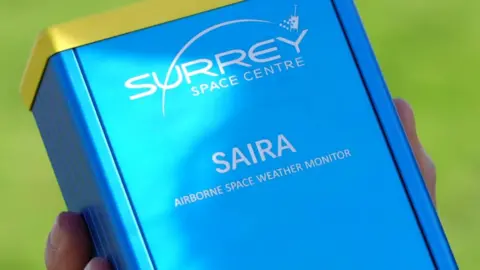 Tamsin Melville/BBC
Tamsin Melville/BBCProfessor Keith Ryden, director of the Surrey Space Centre at the University of Surrey, said the “highly compact detector” was based on equipment they already fly on aircraft.
He said they have been “doing these kinds of measurements for a long time – our very first instrument flew on Concorde back in the 1980s and recorded several space weather events.”
He added: “We now have an even lighter system designed for rapid balloon launches, reaching altitudes more than twice that of typical commercial aircraft levels – giving us a new way of tracking radiation levels through the atmosphere.”
A third monitor was launched in The Netherlands by the Dutch national weather forecasters.



